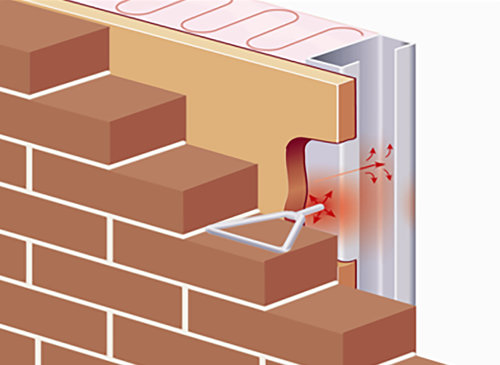

CI will reduce or eliminate thermal bridging in order to protect the insulation’s R-value. CI controls thermal heat transfer, lessens condensation (eliminating unhealthy and structurally damaging mold), and minimizes temperature fluctuations.

Thermal Control LayerĪ tight building envelope requires continuous insulation (CI) over all building components without thermal bridges other than fasteners and service openings. The seven must-haves for designing a high-performing building envelope system should include thermal, air, vapor, water-shedding control layers, durability, and adequate roofing and glazing systems. The whole-building system approach encourages the entire construction project team to work together to achieve overall project goals for a tight building envelope.


Prevents moisture infiltration by stopping condensation in the wall system to resist structurally damaging mold and mildew.Stops air infiltration through the wall, lessening energy use and costs.The benefits of high performing building envelopes include: High-performing building envelopes stop air leaks or drafts and moisture infiltration through an exterior wall by installing continuous air and moisture barrier to control the infiltration and accumulation of water. Benefits of a High-Performing Building Envelope
#BUILDING ENVELOPE MATERIALS CODE#
The 2021 commercial IECC section C402.5 dictates compliance of the thermal envelope of buildings in Sections C402.5.1 through C402.5.8., and the 2021 residential International Energy Conservation Code (IECC), Section R402.4 dictates that the building of thermal building envelopes will limit air leakage by the requirements of Sections R402.4.1 through R402.4.5. Furthermore, the building envelope system should ensure durability, structural strength, pleasing aesthetics, short- and long-term economic feasibility, and code compliance. The envelope should also manage noise, solar radiation, airborne pollutants, and the spreading of fire and smoke. Heat, air, and moisture and preventing rain intrusion. Tight Building Envelope DesignĪ high-performing building envelope design includes all the elements of a building’s outer shell (walls, roofing, foundations, windows, and doors), effectively controlling In addition, high-performing building envelope components require adequate roof and glazing systems. Our complete systems include all the wall layers needed for a high-performance building envelope system: vapor, air, water, thermal, and durable water-shedding control layers. Sto Corp.’s wall systems create energy-efficient, durable, safe, and sustainable walls with outstanding aesthetic appeal. offers architects and builders with innovative options for creating high-performance building envelope systems.


 0 kommentar(er)
0 kommentar(er)
